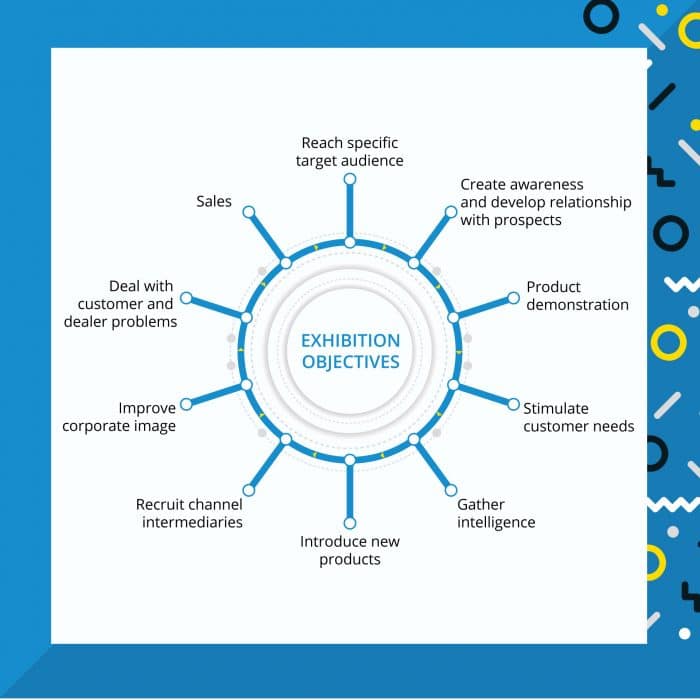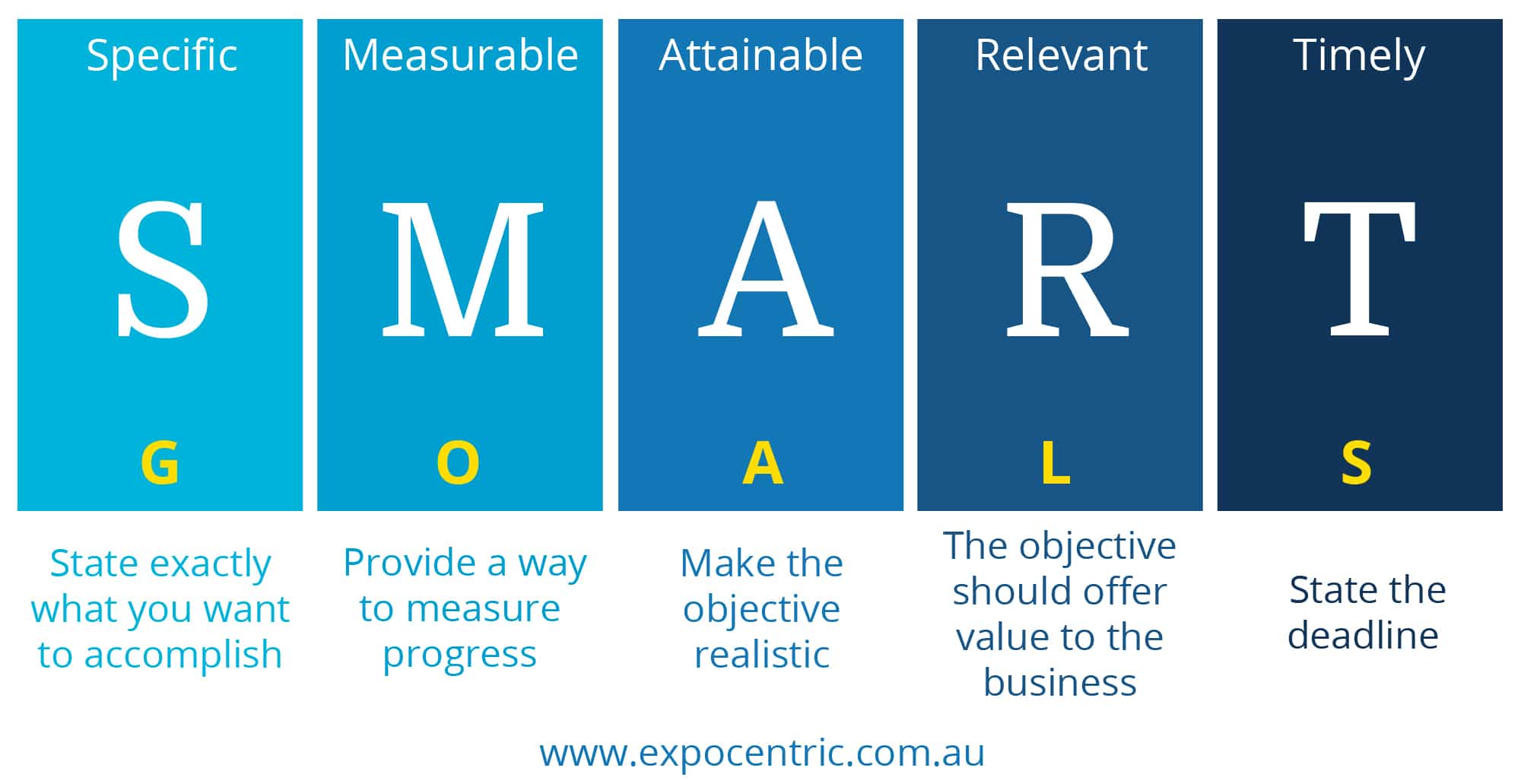Deciding where to exhibit is a critical decision in every company’s exhibition marketing strategy. This decision needs to be analytical, taking into consideration factors about the brands target market, show specifications and location on the floor plan.
However, before deciding which show to attend, strategic decisions need to be made about why the company is attending the exhibition, what is hoping to be achieved by exhibiting and how to measure if exhibition participation has been successful. Exhibition and event objectives need to be clearly defined.
Setting clear objectives for exhibition and event attendance will influence every aspect of the company’s exhibition experience; from the stand design, brand messaging to facilitating maximum ROI.
These objectives need to be formalised in writing and should form the beginning of the exhibition and event strategy.
Follow our 3-step guide to defining company objectives:
1. COMMON EXHIBITION OBJECTIVES
2. SMART OBJECTIVES
3. EVALUATION

Step one: Common exhibition objectives
Each individual exhibition or event should have an original list of objectives developed. No two exhibitions will have the exact same attendee profiles, location characteristics etc. Therefore, it is imperative that different objectives are consigned for every exhibition or event.
There are many commonly used exhibition objectives:
Sales generation
- direct sales
- generating qualified leads
- building the company database
- registering interest in new products
Branding
- improve brand awareness
- change brand positioning
- expand to new markets
Strengthen relationships
- securing repeat business
- upselling for additional business
- winning back lost clients
Product launches
- raising awareness and interest
- demonstrating prototypes
- gaining customer opinions and feedback
Networking
- reaching new partners
- meeting dealers, distributors or agents
- shoring up support for current agreements/channels
Market research
- assessing the competition
- setting sales targets and budgets
- campaign testing
- carrying out surveys
Media relations
- gain media coverage
- raise media profile
- make new media contacts
- reinforce existing journalist relations
Once a list of general objectives have been developed, a solid exhibition strategy should be built by expanding and defining the objectives to form a specific and measurable plan.

Step Two: Smart Objectives
Defining measurable exhibition objectives will ensure that the evaluation of results are completed effectively, and appropriate adjustments / improvements can be made for further exhibition participation.
Setting SMART objectives – specific, measurable, attainable, relevant, timely – ensures exhibition participation can be monitored, evaluated and the exhibition strategy success can be meritoriously measured.
Specific
- State exactly what is to be accomplished
- Set real numbers and figures
Measurable
- Provide a way to measure progress
- Make sure the goal is trackable
Attainable
- Make the objective realistic given the circumstances and tools available
- Work towards a goal that is challenging, but possible
Relevant
- The objective should offer value to the company
- Ensure it will contribute to the overall company
Timely
- State the deadline
- In some cases, this may be a few months after the exhibition has finished

Step Three Evaluation
After exhibition objectives have been set, they should be constantly evaluated and monitored throughout the exhibition process. Don’t set and forget.
Exhibition objectives need to be disclosed company wide and the strategies being implemented in order to achieve them. Sharing the measurable objectives aid all departments in understanding the exhibition purpose and how they can assist in achieving desired targets and goals.
At the conclusion of the exhibition (or in the following months depending on the timing of your SMART exhibition objectives) ensure a through evaluation of each objective is executed.
This evaluation is vital to ensure the objectives were achieved and the company’s exhibition and event strategy was effective. The information and data that is gathered during this process will be invaluable for the companies next exhibition attendance.
You can read more about post show activities here.
With exhibition and event objectives now outlined, the next step in planning ‘Where to Exhibit’ is Defining the Target Audience. This will be discussed further in our next blog.
